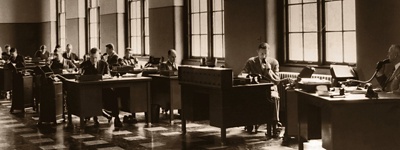From Process to Progress
ERP is about process efficiency, not business transformation. In an environment in which change is occurring faster than ever due to globalization, regulation, evolving customer preferences, technology, and other factors, rigid legacy systems and technical debt hold businesses back from achieving their potential.
Consider “as-a-service” delivery. The trend that started in software has expanded to nearly all corners of the economy, including vehicles, industrial equipment, and appliances. The shared cloud as-a-service market is expected to grow 21% annually to more than $800 billion by 2025, according to IDC.
Shifting to a subscription model impacts nearly every part of a business, including accounting, inventory management, channel relations, and sales force compensation. Many legacy ERP systems are simply not up to the task. Brittle, purpose-built architectures are not designed to accommodate the sudden emergence of new revenue sources, cost accounting practices, and legal entities.
Compliance is another challenge. Some businesses are subject to hundreds of regulations at the local, state, and federal levels, and the rules change all the time. New SEC regulations are in the pipeline that will require businesses to provide data on things like compliance training, workforce diversity improvement, sustainable sourcing, and emissions reduction. Much of this data has never been captured before and legacy, on-premises ERP systems need to be upgraded and tested every time a new rule comes into play.
“Rigid legacy systems and technical debt hold businesses back,” says Ernesto Boada, interim CIO at Workday. “IT cannot unlock the data the business needs to make decisions quickly with those systems.”
The Cost of Inaction
Inflexible applications and limited IT resources thwart rapid decision-making and lengthen implementation times. However, many business leaders see ERP modernization as a complex and expensive task that doesn’t justify the necessary investment. Like factory owners at the turn of the 20th century, they can't see past the limitations of their current processes and infrastructure to envision the untapped potential that exists in doing things differently.
“The ERP system is by many considered the spine of any organization, and spinal surgery is a costly and complex affair,” says Bo Lykkegaard, associate vice president, European software research at IDC. “However, the urgency of getting better business insights, greater business agility, and higher employee productivity is driving organizations of all sizes to modernize their ERP.”
But ERP modernization is not about simply putting “new” technology on top of the old way of doing things. Game-changing innovations happen when organizations bring technology to bear in ways that empower them to build something entirely original. With artificial intelligence automating tasks that once required humans, modern ERP can transform manually intensive roles like accounting and financial analysis into strategic ones, enabling people to shift their focus from processing paper to more meaningful tasks like developing skills and improving customer satisfaction.
“Success happens when organizations bring technologies and business processes together to innovate instead of taking a cost-driven approach to ERP modernization,” Boada says.
Business Is Knowledge
Today’s most successful businesses run on information. Intangible assets such as intellectual property comprised about 17% of the average company’s value in 1975. Today it’s 90%. Modern, cloud-based ERP supports digital transformation by making information available immediately to all who need it in a collaborative and interconnected system that’s tuned to respond rapidly to change.
That means planning and decision-making can move from scheduled scenarios based on data processed in batches to real-time, enterprise-wide, continuous forecasting that encompasses finance, operations, human resources, and external data. Periodic reports on workforce training, development, and performance can be replaced with ongoing employee engagement and well-being analysis that 85% of executives now say is crucial to delivering the best customer experience.
Modern ERP enhances organizational agility by providing process automation, frameworks, and change management support that not only makes organizations more adaptable to change but better able to attract talent in a severely skills-challenged environment. It helps keep organizations focused on the customer by freeing workers from routine back-office tasks that erode morale while continually monitoring employee satisfaction and engagement through integrated surveys.
A modern system helps streamline back-end business processes, match supply and demand, and enable access to critical data for everyone who needs it. It can tie into industry-specific systems to give an organization a more complete picture of its business. Low-code/no-code tools let customers build on top of existing functionality or create new capabilities as conditions change without requiring core applications to be modified or taken offline. Customizations unleash innovation rather than locking organizations into a particular vendor and software release.









